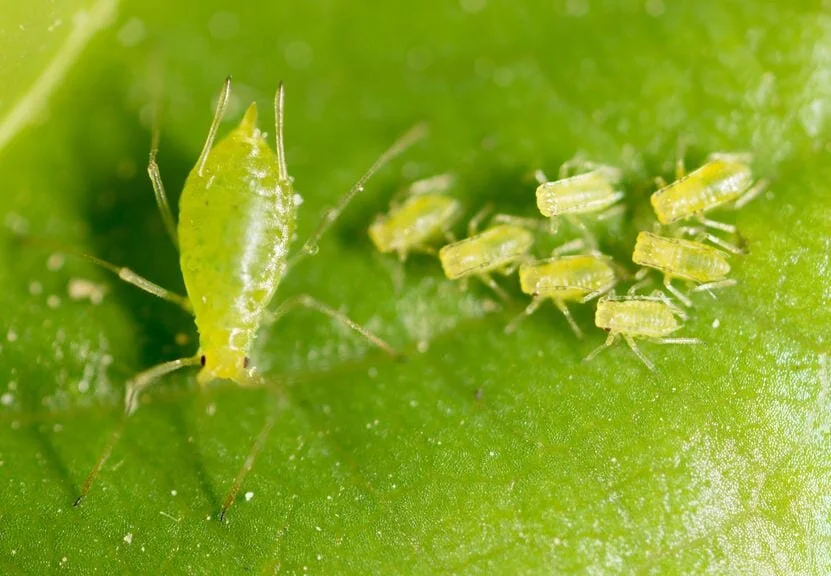Some years it’s flea beetles, or vine borers, or slugs and snails. This year it’s aphids! These small insects have especially taken a liking to our plants in the brassica (cabbage/mustard) family this spring. Usually they are only a problem in the fall, or in closed systems like a greenhouse or high tunnel. But this spring they have been found all over the farm, but especially our pac choi, turnips, cabbage, and broccoli have been seriously affected.
How we approach this problem and its implications, highlight some of the key concepts of sustainable farming and key differences from conventional farming...
First of all, holes in your greens means it's good eats! If the bugs can eat it and thrive, then so can you! If nothing would dare nibble on your greens and survive, maybe you should question whether you should be nibbling on them as well. Our food is also food to many other animals, and organic growing systems try to work within interconnected food webs to provide ecologically sound systems of food production. Food that is produced without drastically altering the natural populations of animals around us means good food for all.
However, some of our crops this year have been entirely eaten by these animals, and they've truly earned the moniker of "pest." In the conventional farming world, we would just turn to industrially produced chemicals that might solve the problem for today, but might be pushing a bigger problem on to the next generation. As resistance to these chemicals grows each time they're used, we have to resort to more and more drastic measures to respond to the problem. Just consider why we need GMOs... What are amphibian and fungal genes doing in a plant's DNA? They're being put there to try and respond to these pest problems that former generations have punted on to us.
Even "organic" solutions to these problems can be fraught with danger. The USDA label of "Certified Organic" still allows organic farmers to put poisons on our food, they just have to make sure the poison was derived (read: industrially processed) from natural, organic sources. But natural organic poison on your food is still poison on your food!
So how do we respond? Most importantly, proactively. We plan to plant multiple plantings so that if something goes wrong with one, we can make up for it in successive plantings. The increased yield our intensive small-scale system produces, compared to industrial mechanized growing systems, usually more than makes up for the losses a single pest might cause. We also try to develop healthy soils that will produce healthier more resistant/resilient plants. We practice crop rotations, so pest populations and diseases don't build up in the soils. We use physical barriers, like row cover and insect netting, to keep the insects off our plants. Sometimes cultural practices, like cultivating at the right time or harvesting at just the right stage of development, can help.
If all of this still fails to resolve the issue, we then turn to natural, non-toxic forms of pest control. Biodegradable soap can be used on soft-bodied insects. Some of these soaps are even rated as safe for use as toothpaste (I know, I've done it often before on backpacking trips). However, to a small insect, it quickly dissolves its waxy protective covering. Hard-bodied insects like flea beetles need a different response. Diatomaceous earth is made of diatoms, microscopic algae with high levels of silicon in them, the same element used in making glass. When the diatoms are ground up it leaves microscopic jagged edges, which is harmless (and some even say beneficial) to humans if consumed in small amounts, it rips apart smaller organisms like the flea beetle. Lastly, we can also use bio-controls. Certain insects can be used to prey on the "pest" populations that have gotten too high and out of balance with the system around them. For aphids it ladybird beetles, aka “ladybugs”. We’ve found many ladybug larvae around the farm this spring too, who have earned the nickname, “aphid dragon” because of their appearance and skill in hunting down aphids.

